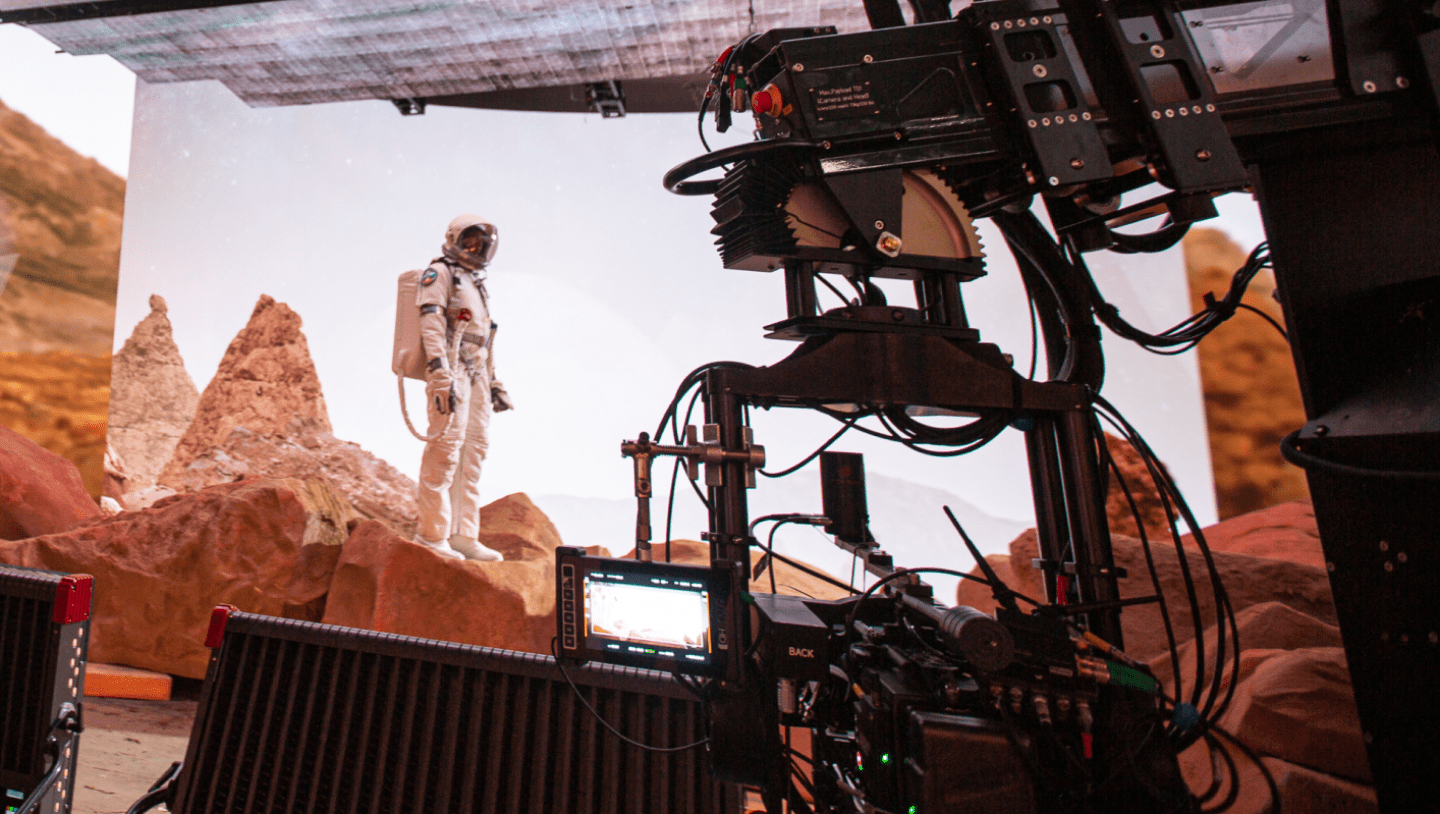Eight benefits of virtual production
Extended Reality
Virtual Production
Workflows

Virtual production has exploded in popularity, partly because of filmmakers’ desire to see visual effects in real-time rather than having to wait for post-production. Now, virtual production is an essential - and growing - part of film and TV production.
Traditionally, film production occurs in discrete, consecutive phases: scenes are story-boarded, actors are filmed either on set, location or green screen, and after the filming is complete, post-production begins.
Virtual production on the other hand is pervasive in the process: from pre-production to post, and fully integrated into filming.
With much of the R&D for this technology originating in the gaming industry, filmmakers can now build effects and environments with game engines like Unreal Engine. Using high-power graphics cards, camera tracking, as well as virtual and augmented reality, we have the technology to marry the digital and physical world, where what you see in-camera is what you get.
To see virtual production in action from behind the scenes, Unreal Engine’s case study gives a glimpse of how it works on set.
So what are the benefits of virtual production?
1. Natural scene lighting
Green screens require certain lighting states in order for them to work, but this vastly restricts the lighting available in any scene being filmed using the technique. It’s almost impossible to film dim, moody scenes on a green screen, meaning that extra labour has to go into post-production in order to have the desired effect.
With virtual production, the ambient light from the LED screens means the correct light is created automatically, giving the scene a natural feel and eliminating extra work in post-production.
2. Complete design freedom
Virtual production within an LED volume means there’s no need to compromise on design for elements like hairstyles, costumes, or props. This gives filmmakers and their teams complete freedom over how things appear in the film, with no need to budget for post-production fixes because of a colour, pattern, loose hair, or green spill.
3. Full environmental control
Photogrammetry and 3D scanning enable the virtualisation of real-world sets and environments to create whatever scene the filmmaker wants. Then, using game engines, it’s possible to reshape landscape and move trees, buildings, and mountains, or keep a twilight going all day.
4. Building virtual worlds
Not only does virtual production allow natural settings to be replicated in the studio, it can also work in tandem with extended reality (xR) technology to create a 360˚ environment that fully replicates the natural environment. LED screens can be virtually extended by interfacing with the camera, giving scope for entire worlds to be created from a single stage environment.
Discover the new Disguise r18 software release for virtual production
5. Encouraging natural performances
When actors perform against an LED screen that’s displaying an entire virtual world, they are able to respond to their surroundings as though they are real, because they are, in fact, immersed in that reality. There are other advantages to this: natural sightlines to objects, scenery and events within the set, and the ability for performers to react instinctively rather than by what they’ve been told will be happening on the set.
6. Minimising cost and avoiding budget blow-outs
Today, film producers using virtual production techniques can budget with greater clarity. In the past, unforeseen elements such as weather, the unavailability of a location, or a green screen effect failing to work as intended, will have made a project exceed its planned budget. This clarity is down to a number of reasons, including:
- Ability to adjust content during filming rather than in post-production
- No need for expensive reshoots
- No need for post-production rendering to achieve accurate lighting
- Perfect replicas of outdoor landscapes mean the producers can dictate the schedule instead of natural light or weather
7. Realising the vision
Since virtual production spans the whole filmmaking process, right from the very earliest stages, you can plan out scenes and shots with precision, according to the exact creative vision of the director. This means everything can be planned accurately.
But the plans don’t have to be set in stone. The flexible technology of virtual production allows for on-the-fly iteration and experimentation without posing significant risk to either the production or budget, offering complete creative freedom without compromising the practical necessities.
8. Seeing the finished product in real-time
Seeing the finished product in real-time by combining LED, camera tracking technology and real-time render engines, directors and actors are able to see what they’re creating playing back in real-time, adjusting as they go. This means creators can finally shake off the “fix it in post” attitude and get it right on the day.
Why choose virtual production for your next film or TV project?
Virtual production is a wholesale departure from the old ways of doing things. From using xR technology to create realistic worlds of infinite detail and beauty, to the more pragmatic benefits of budget reliability and clarity in planning, virtual production hands complete control over to the filmmaker.
